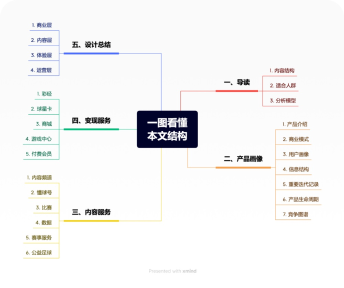Last time we talked about the situation of graphic design during the Second World War, which belongs to a period of diversified development. Modernism has gradually become the global mainstream design style through this process.
The term "modernism" is not familiar to our generation. For the description of design, the adjective we have more contact with is actually "internationalization".
Around 2013, the most common demand of Party A for the design is "high-end atmosphere and high grade", which is referred to as "tall", which actually means "internationalization".
This is so simple and crude. I don't know where and who brought up the "rhythm" when I said the seemingly unspoken design needs. In fact, these adjectives are tolerant. They are expressing the form of "modernism", which is mainly characterized by simplicity, function and rationality.

Modernist graphic design
Compared with modernism, internationalism is actually more "formulaic", "standardized" and "orderly", which can be understood as an upgraded version of modernism. This style pays more attention to the scientificity of design, because no matter how graphic design develops, its core value is the effective transmission of information.

Internationalism style graphic design
Therefore, a key word often appears in the graphic design techniques of internationalism, which is "grid system". In fact, the works designed in this way have the characteristics of "internationalism" and practical atmosphere.

Application of grid system in graphic design
Internationalism basically swept away and dominated the world after its birth in the late 1950s. This style is still the mainstream style in commercial application design until now.
So how was internationalism in graphic design born, why was it so strong, what famous figures are there, and how to master such a style to make graphic works more international? Let's explore.
Why internationalism?
At present, many books on the market are scattered, jumping, or running account statements when describing the content of internationalism, so this time we want to comb the logic line of the development of internationalism with you, hoping to have a skeleton and flesh and blood.

Internationalism style graphic design
The term "internationalism" appeared relatively early in the field of architecture, which can be traced back to 1922 (see Shi Tailong's history of world modern design for details). The situation is similar to that of graphic design, and it is also an upgraded version of modernism. The internationalism in the field of architecture is represented by Mies van der Rohe. (see "biographies of masters" for details).

Shi Tainong's history of world modern design
It can be said that the title of "internationalism" in graphic design is borrowed from architecture, because their opinions are very consistent and their sense of form is unified, which is related to their development source, which will be introduced later.

Internationalism style architecture
The internationalism discussed in this issue is mainly aimed at graphic design. For other contents, see other relevant design history series of Shi Tailong.
First of all, we should understand why there is "internationalism" in graphic design.
Things should start after World War II. At that time, the postwar economy of the whole world was gradually recovering. After the 1950s, international trade began to increase sharply. Some giant multinational companies often need to carry out business operations in hundreds of countries. Therefore, there is an urgent need for a new graphic style that can promote international exchanges.

Multinational enterprise brand
Friends who have seen 35 times know that the graphic design style during World War II is relatively diversified, which means that the design "language" and "communication system" of different countries are different. Therefore, communication is easy to create obstacles and reduce efficiency. An international standard is needed for transnational cooperation.

Graphic design works in World War II
This is the case in any field. Of course, language bears the brunt. In other aspects, let's give another example:
For example, the international standard sound "La" - (A1) in the field of music was established in London in 1939. In the past, many different nationalities, countries and even regions had different scales, modes and pitches. Therefore, it was impossible to carry out international music exchange, so it was naturally impossible to develop together.
At that time, the largest economy after World War II was the United States, so how to determine this international graphic design style was also led by the United States. After all, they also had the most multinational companies.
The core appeal of these multinational companies for graphic design is to be simple and clear, with good communication function. Looking at it, there will soon be a graphic style that fully meets the requirements and comes from Western Europe, namely the "Swiss design style" that has been developed for several years at that time.

Typical Swiss graphic design
How this style spread to the United States is described in the world modern design history series. It will not be repeated here. It is certain that the United States is like a "style amplifier" after World War II. Many design or artistic styles are easy to be popular in the world after passing through the United States.
"Swiss graphic design style" was spread by the United States to developed countries all over the world through product packaging, instructions, corporate brand image, publicity posters and other means through trade channels, media and publications.
It is popular as soon as it appears, because it obviously solves everyone's pain points, meets the needs of economic and social development, and once again confirms that "the success of a style is because society needs it to succeed".

Highly rational Swiss graphic design
Since the 1950s, some design critics have described this style as "internationalist style".
The source of internationalism graphic style
In fact, the exploration of this style can be traced back to around 1918. The corresponding character is Swiss designer Ernst Keller.

Ernst keller
Since the beginning of this year, he has served as a professor of advertising design in Zurich applied art school, Switzerland. In the process, he consciously developed a design method that attaches importance to "how to better coordinate the design function and form". In addition to teaching, he has also been applied to some commercial application projects, such as logo design, font design and book design.

Ernst graphic design works
At this time, Soviet constructivism and Dutch style school had just begun, while Bauhaus had not been established.
Ernst's exploration, of course, was not achieved overnight, but constantly thinking in practice. In the process, he formed an ideological concept of modern design, that is, "content determines form". In fact, this concept was put forward in his own article by American architect Louis Sullivan in 1896 (see "biography of Masters" for details).

American architect Louis Sullivan
The original text is "form everflows function", which translates into the famous "form follows function". In graphic design, "function" is information content, while in architecture, "content" is residential function. The two hope to convey the same concept.
Ernst has been designing based on this concept. In 1931, he designed architectural exhibition posters for Bauhaus. The form is very modern, the information layout is standardized, rigorous and concise, which is highly coordinated with the modernist architectural style.

Ernst's poster for Bauhaus
When he needed to design the exhibition poster with the theme of medieval art, the serif font and classical elements also made a very concise plane effect, which fully complied with the design principle that content determines form, and the output works made people feel very harmonious with the theme.

Ernst's graphic design
Ernst's highly functional graphic design idea has laid a good foundation for internationalist graphic design.
The origin of Bauhaus
There are two key figures who really establish the Swiss graphic design style, both from Switzerland and then graduated from Bauhaus, Germany, namely Theo Ballmer and Max bill.

Theo Balmer vs Max bill
Therefore, why internationalism in the two fields of plane and architecture has the same core, harmonious and unified with each other, which is closely related to their "consanguinity". Mies van der Rohe was once the third president of Bauhaus, and everyone has the same origin.
Earlier, we talked about the application of "grid system" in internationalism. In fact, the invention of this system has no clear characters. It is more like accumulated wisdom. If you want to trace back, you can basically write another topic.
But it is certain that this design method based on mathematical calculation has developed synchronously with printing and word casting technology. According to the research, Theo is one of the earliest designers who used grid system for graphic design.

Theo's graphic design works
Theo was a student of Bauhaus Dessau period and mainly studied under Gropius and Paul Klee. His grid design idea is actually closely related to the "Dutch style school". The works of the style school seem to be an integrated network, and there are very rigorous mathematical calculations behind it, so they look neat, orderly and rational.
Therefore, most of Theo's works are vertical and horizontal structures with a strong sense of modernity. For example, the poster he designed for the architectural exhibition in Basel, Switzerland in 1928 fully reflects his network design idea, which not only has good functionality, but also has a very prominent visual impact.

Theo's 1928 poster design
Max bill is familiar to everyone because he later became the first president of Ulm college in West Germany (see the history of world modern design for details).
Bill is also a student of Bauhaus Dessau period. His tutors include Gropius, Kandinsky and moholi Nagi. He has always been a design expert, covering the fields of painting, architecture, sculpture, product design and graphic design.

Bill painting
He is regarded as a person who completely inherited the Bauhaus spiritual core and design system. After graduation, Bill returned to Switzerland to work and began to explore his own design style in 1931.
Switzerland has always been a neutral country, so it was not affected by the war during World War II. During this period, Swiss designers and artists obtained the conditions for immersing themselves in exploration. This condition is different from everyone's synchronous exploration. For example, if they participate in the college entrance examination, a makes up classes, but B does not make up classes, then B is likely to step back in addition to not making progress.
Swiss graphic design style really matured during World War II. Max bill and Theo are the main representatives. Bill's graphic design pays attention to high order and grid system. He attaches great importance to the arrangement of picture space and visual unity.

Bill's graphic design
The representative works are the posters for the American architectural design exhibition in 1945. Bill arranged the illustrations in the comprehensive grid, and tilted the grid 45 ° in order to make the layout not rigid. In this way, the diamond illustrations have the information guidance effect of arrows, taking into account the form and function. It is a typical Swiss planarity style.

Bill's print works in 1945
In fact, Bill's design method is based on mathematical model concepts of "modular unit" in addition to grid.
Closing statement
In addition to the above-mentioned pioneers, there are many outstanding representatives of internationalist graphic design style, but due to space, we can't introduce their lives and works one by one.
Generally speaking, the predecessor of internationalism is actually Swiss graphic design, which is based on Bauhaus modernism, integrates more mathematical considerations, pays more attention to the scientificity of design, and has a more rigorous effect on the transmission of information. Moreover, internationalism mostly serves commercial design, which is also a difference from modernism.

Internationalism graphic design
It is hoped that the grid system will be used in making graphic design internationalist, but it should not be completely bound by it. Moreover, sans serif fonts are not inevitable. Classical fonts can also make internationalism (more elegant). No matter what means and methods are used, remember the nine character truth summarized by Shi Tainong for you, and then strive to achieve success. The truth is as follows:
Good function, concise enough and orderly.

Internationalism graphic design
That's all for today's story. Thank you. Goodbye next time!
Welcome to the WeChat official account of the author, "design history too strong":










